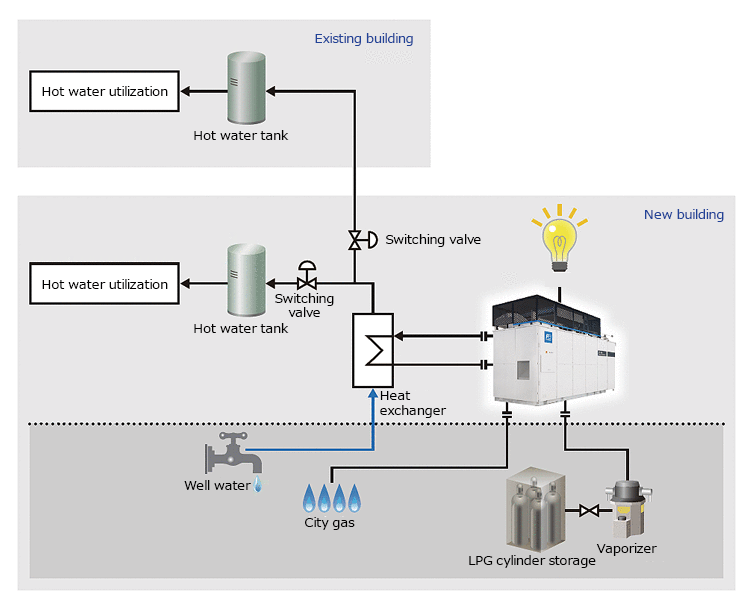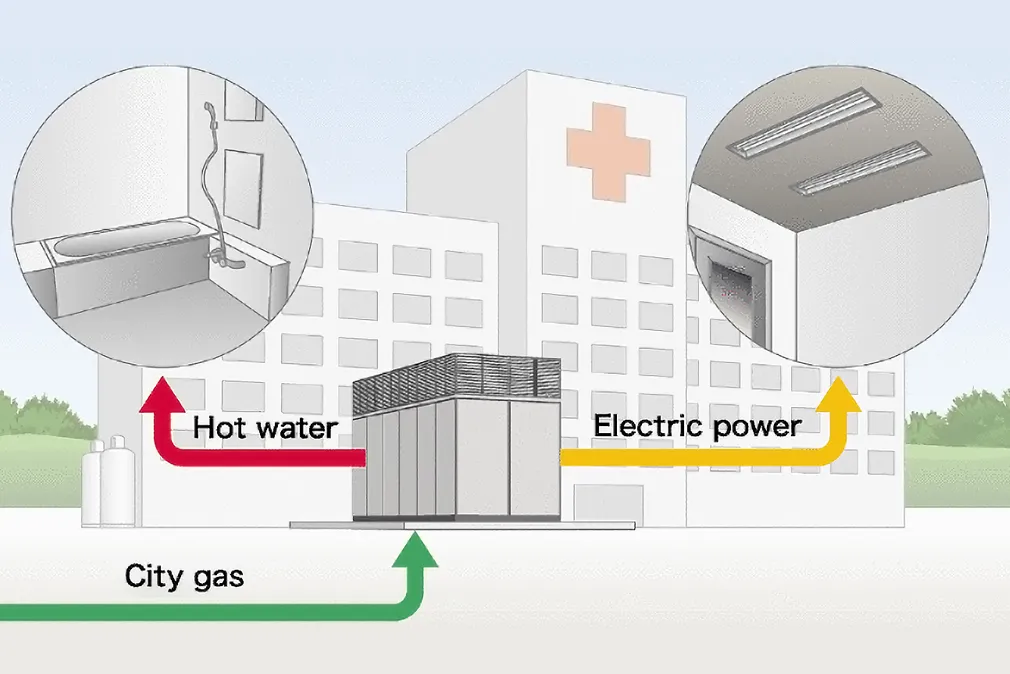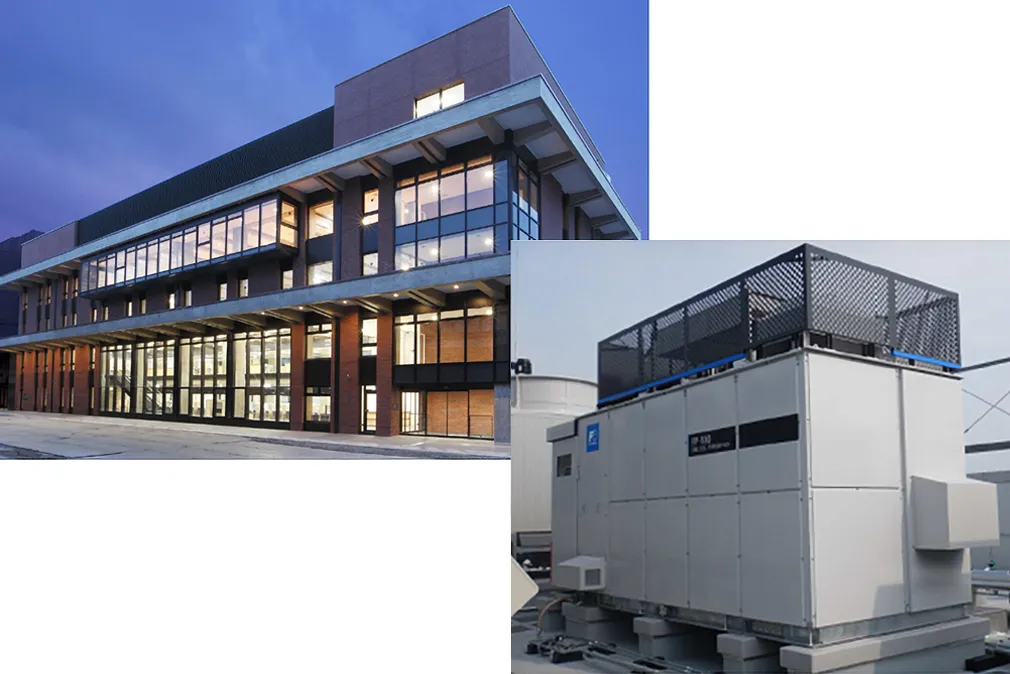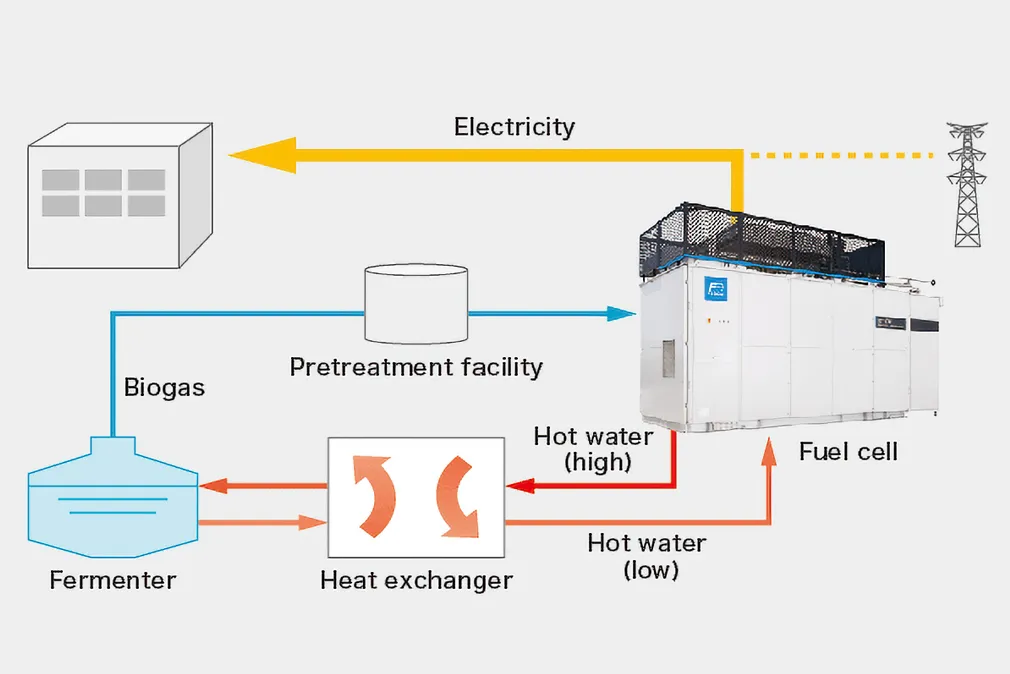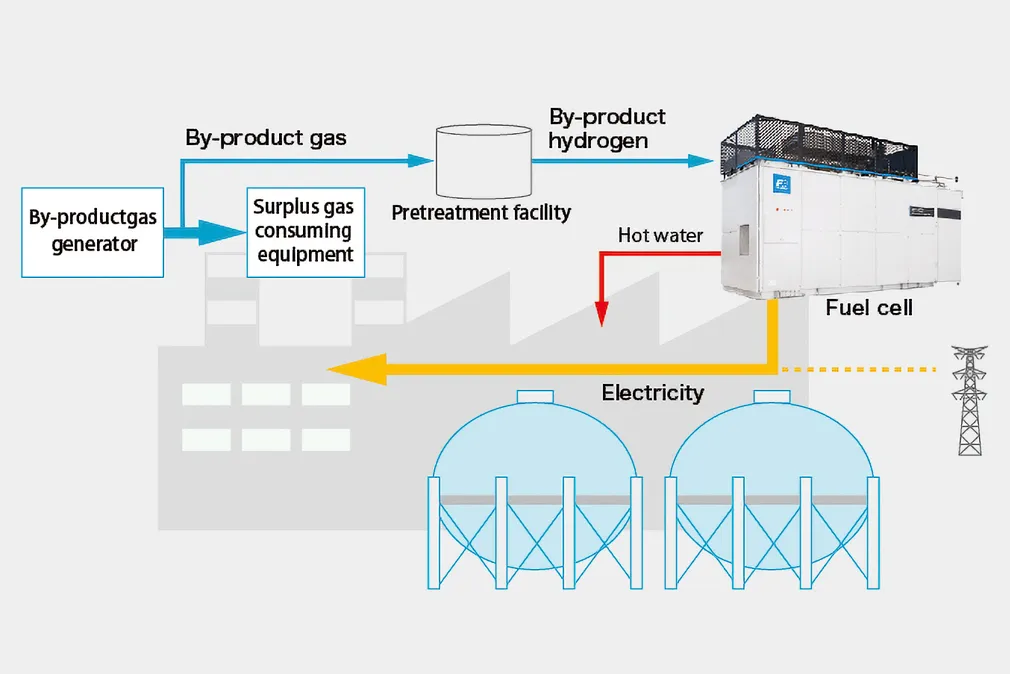Installation case studies
Operation started: July 2016
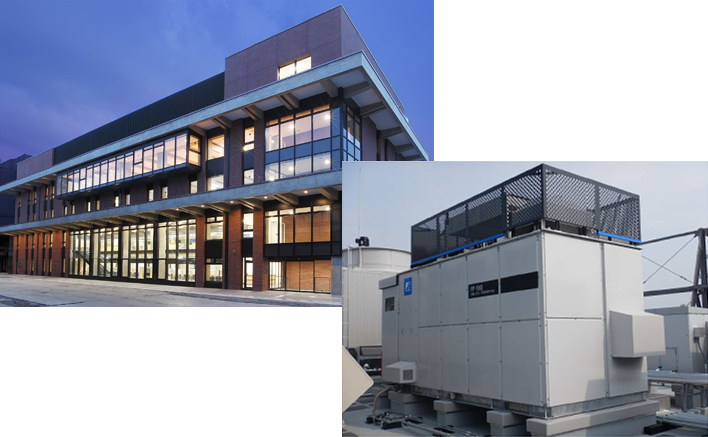
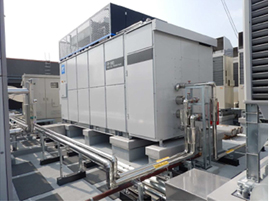

The new government building of Hirosaki City Hall employs a seismic base isolation structure to strengthen its functions as a centralized disaster prevention facility in the event of disasters and other emergencies, and important equipment and IT equipment are consolidated here.
Fuel cell gas cogeneration is responsible for strengthening our disaster prevention functions. To prevent our supply of power from being cut off in the event of a disaster, we are trying to diversify our energy dependence at Hirosaki City Hall by securing our supply of power using multiple systems and have also adopted emergency in-house power generation equipment and solar power generation.
In the event of a disaster, it is possible to supply electricity and heat from the fuel cells to important facilities in the government building. Equipped with clean power generation facilities that feature low noise, low vibration, and reduced CO2 emissions, we are protecting the safety and security of our citizens.
Electricity: Power supply to critical loads by grid interconnection at normal times, with independent operation at power outages.
Waste heat: Medium-temperature hot water (60°C) is used for air-conditioning preheating.
<System flow>
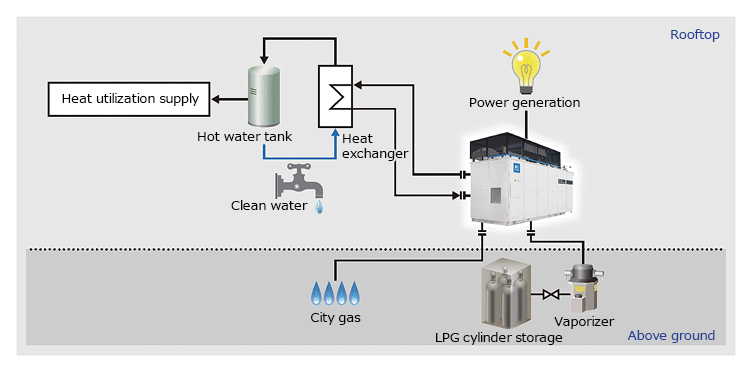
Operation started: August 2014
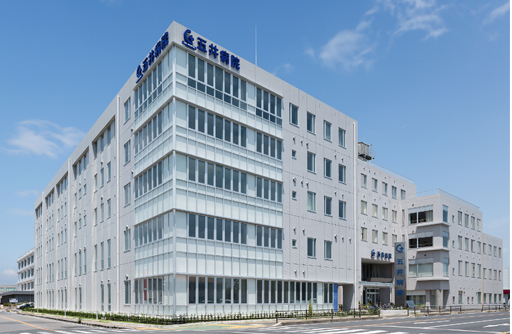
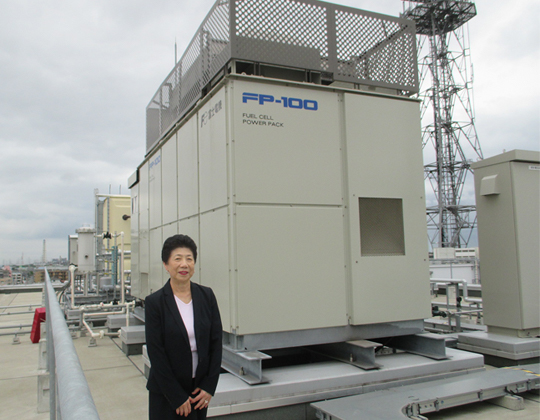

We installed environmentally friendly fuel cells that are capable of supplying electricity even in the event of a disaster.
We will continue our progress so that we will be able provide peace of mind and safety to everyone in the region.
Electricity: Power supply to critical loads by grid interconnection at normal times, with independent operation at power outages.
Waste heat: Medium-temperature hot water (60°C) is used for hot water supply preheating.
<System flow>
